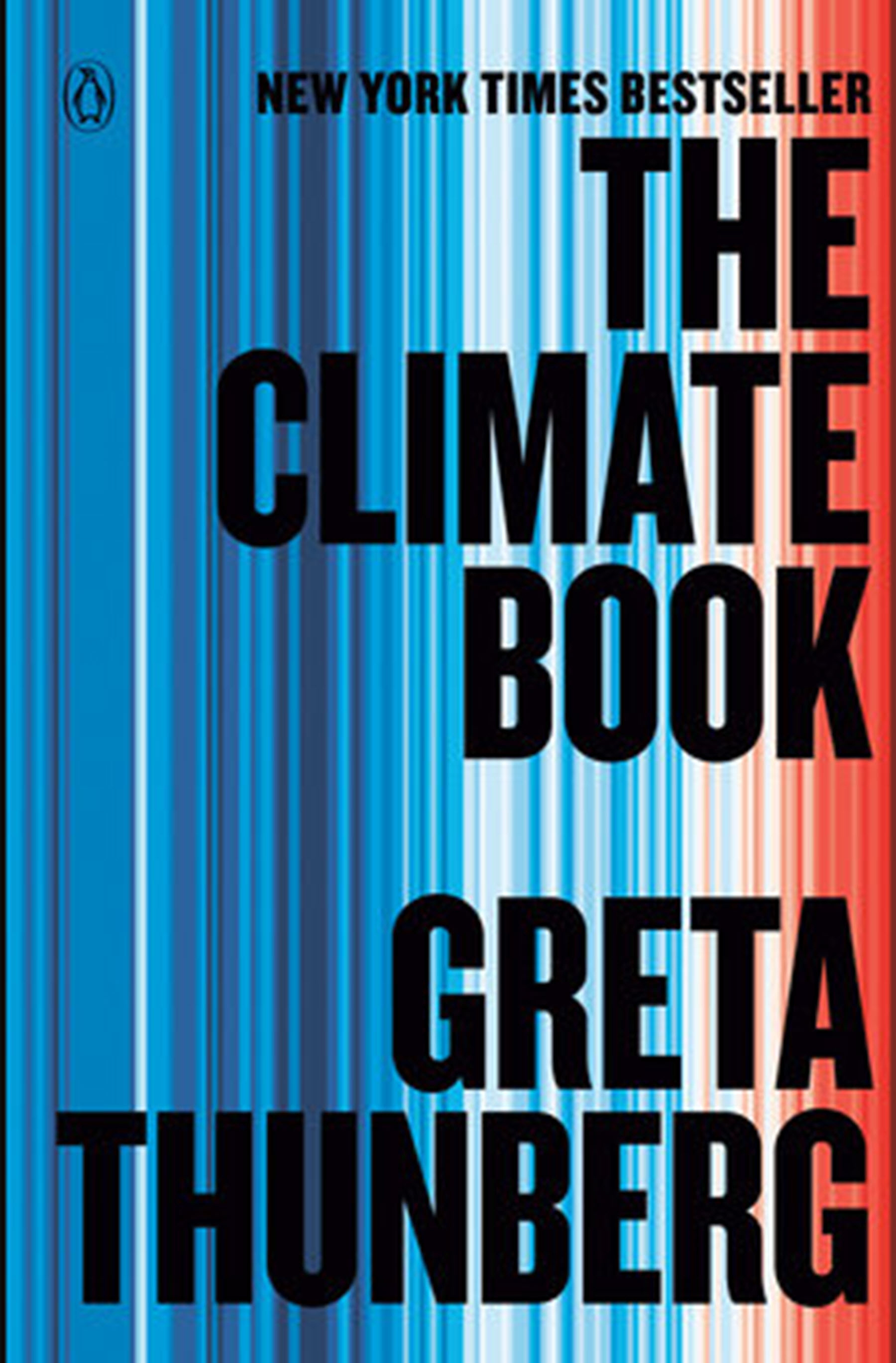By Ray Bert
The Climate Book, created by Greta Thunberg. New York City: Penguin Press, 2023; 464 pages, $30.
Greta Thunberg is not the author of The Climate Book. The young activist – still only 21 years old, having risen to widespread fame in 2018 at 15 – did, however, decide to create “a go-to source for understanding (the) different, closely interconnected crises” of climate change and sustainability. Thunberg did that by inviting more than 100 scientists and other experts, activists, and storytellers to lend their expertise to the project and by personally writing 18 introductory essays for this voluminous collection.
The Climate Book’s title page gives a strong nod to the distinction: It was “created by” Thunberg. And perhaps in this sense we might think of the young Swede as being the catalyst for the book, just as she has been a catalyst for so much action and focus on the climate issue. From the “climate strikes” at her high school, which brought widespread attention and inspired others to do likewise, to her powerful “How dare you?” speech at the United Nations’ Climate Action Summit, her effect has been undeniable.
Further reading:
- How are demographic, climate change trends on ‘collision course’?
- Book takes an optimistic view of a clean energy future
- Are civil engineers doing enough to account for climate change?
As for the content, it’s clear that despite the galaxy of assembled luminaries filling most of its pages, Thunberg aimed to make the material accessible so that nonexperts – or even someone reading about climate change for the first time – could understand. This starts with the naming and arrangement of the book’s five sections: “How Climate Works,” “How Our Planet Is Changing,” How It Affects Us,” “What We’ve Done about It,” and finally “What We Must Do Now.”
That’s an extraordinarily logical structure, with section titles so clear and to the point they explain themselves, and one might even say an obvious one. But plenty of other books, even very good ones, seeking to explain this sprawling and urgent topic didn’t think to present the information that way.
With so many essays, it’s hard to think of an obvious topic not addressed somewhere. Among those covered: sources of pollution like microplastics; extreme weather effects, from floods to wildfires; ecosystem-specific effects, such as marine acidification; antibiotic resistance; climate refugees; geoengineering; and so much more. Thunberg, in her opening essay, makes her own attempt at explaining the breadth of topics, noting that The Climate Book “covers everything from melting ice shelves to economics, from fast fashion to the loss of species, from pandemics to vanishing islands, from deforestation to the loss of fertile soils, from water shortages to Indigenous sovereignty, from future food production to carbon budgets.”
The scope of the book’s 400-plus pages is large, and that’s partly because there are simply so many factors at play. But it is also in service to one of Thunberg’s main points: So many of these issues are interconnected, and so many of them spring from similar problems of inequality, of prioritizing profitability over sustainability, of turning a blind eye toward problems rather than fixing them at their sources.

The Climate Book can be read front to back, but it also lends itself well to a reader dipping into a specific topic for a quick primer. (Additionally, because most of these topics can only be summarized in the handful of pages allotted to each, the many contributors provided thousands of references and citations in total, which are available at theclimatebook.org.) Obviously, it is not written in “one voice,” and different contributors make use of data, storytelling, history, or persuasion to make their points.
One voice that does stand out though is, unsurprisingly, Thunberg’s. At the top of each new section she reappears, each time bringing her passion, her bluntness, her sense of urgency, and her pleas to believe and act on the science. She closes by asking for more to become involved, work on solutions, and spread the word. She ends it with a simple plea, one that clearly was a watchword for the book: When it comes to the climate crisis, “tell it like it is.”
This article is published by Civil Engineering Online.



